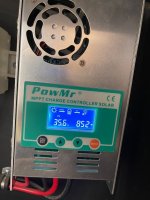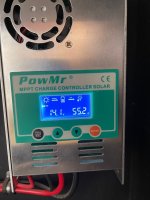- Thread starter
- #21
Awesome. Was thinking that after my edit. Youre probably making ice and using coolers for high traffic items.
Thats pretty sweet when you have so much solar its not even being used!!! Im hoping to run a 375w heater this winter off the solar during the day. (might have wrote that already i forget) Once the batteries are charged its like free power just going to waste.
Given all the inefficiencies i dont think my possible 500watts of panel will cover it. But it will supplement most i guess.
Now that my blue charger is working that kind of changes things. I can run my genny and actually fully charge my batteries without requiring the solar. As it sits now my batteries would only get a 13.7v charge from the WFCO trailer charger.
Thats pretty sweet when you have so much solar its not even being used!!! Im hoping to run a 375w heater this winter off the solar during the day. (might have wrote that already i forget) Once the batteries are charged its like free power just going to waste.
Given all the inefficiencies i dont think my possible 500watts of panel will cover it. But it will supplement most i guess.
Now that my blue charger is working that kind of changes things. I can run my genny and actually fully charge my batteries without requiring the solar. As it sits now my batteries would only get a 13.7v charge from the WFCO trailer charger.



